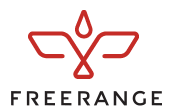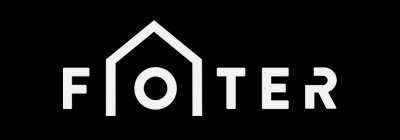I don’t think there’s a marketer out there who wants it to be obvious that they are using free images and stock photos. But it’s not always possible to hire a photographer to get those eye-catching photos.
Luckily, free photo websites give you many options to find that perfect image for your content marketing strategy.
Even better news: You don’t have to spend hours searching the web yourself to find these sites.
I’ve compiled a huge list of free online image sources that have photos you will actually want to use. It started a few years ago and I have continued to update and add to it.
The sites are in no particular order. Some have extremely niche categories.
Even though I provided notes about each website, be sure to review each site’s license agreements to understand how the photos can be used and whether attribution is required.
1. StockSnap.io

Every week, hundreds of high-resolution photos are added to StockSnap.io.
According to Stocksnap.io, each one of their images is released under Creative Commons Zero and can be copied, modified, and distributed, including images that will be used commercially. No attribution is required.
They curate photos from around the web, but also have their own network of talented photographers.
2. Pixabay

Pixabay has more than 530,000 photos, illustrations, and vectors.
As stated on their website, all images are released under Creative Commons CCO into the public domain and can be used royalty-free, including for commercial purposes. Attribution is not required.
A search feature makes it easy to find what you’re looking for.
3. Pexels

Pexels makes it easy to access databases of hundreds of thousands of high-quality photos.
Not only does Pexels pull from its own website that houses images from its team of photographers and community members, but it also searches other sites, including Pixabay and Gratisography.
The images can be modified and used for commercial and non-commercial purposes.
Attribution is not mandatory.
4. Unsplash

Unsplash is one of my favorite free photo websites. All you have to do is visit the site to know why.
As their website states, there are 10 new high-resolution photos added every 10 days and all images are licensed under Creative Commons Zero.
Be sure to also check out Unsplash Instant for Chrome.
5. Unrestricted Stock

Unrestrictedstock.com offers royalty-free photos, videos, and vectors at no cost.
As stated on their website, you can do pretty much anything with their online collections.
The license agreement only has a few restrictions, which should be checked out before using their stock.
6. Superfamous

Superfamous features eye-catching images by Folkert Gorter.
They are subject to the Creative Commons Attribution 3.0 license and can be used for your own purposes, as long as you give credit.
7. Travel Coffee Book

Travel Coffee Book is a great site if you are looking for landmarks and scenery photos.
All images are available under Creative Commons Zero.
The tool can also work as a photo management tool where you can also submit your own travel photos to the website.
8. Burst

Shopify offers Burst, which is a royalty-free provider for high-resolution photos. Anybody has permission to modify the images in any way and use them for commercial purposes.
Not only is there a search feature, but the website also offers a good representation of different areas and topics, and the categories are useful when you are not sure what you are looking for.
Some images on the website fall under the Creative Commons CC0 license, but others have a nonexclusive license, so be sure to check how you can use the image you download.
9. Freerange Stock

Freerange Stock has thousands of free photos available for commercial or non-commercial use.
According to their website, the photos are directly from their in-house photographers, archives, and their community of photographers.
They request that you include an image credit similar to the following, “Photos courtesy of and copyright Free Range Stock, www.freerangestock.com,” as well as the name of the photographer.
10. NegativeSpace

NegativeSpace provides images that work around a common theme of a central focus point with blurred surroundings.
The site is easy to use and even allows you to search for images by color or simply select from one of their categories.
The images can be used based on the Creative Commons CC0 license.
11. Morguefile

The Morguefile has a nice collection of photographs that are free for corporate or public use.
According to the website, the Morguefile license is for the use of designers and illustrators and it is requested that you give credit to the photographer.
If you are planning to use the image in a blog post, it is recommended that you get in contact with the photographer and include a byline with the image that includes the photographer’s name.
12. Picjumbo

Picjumbo.com is a stock photo site created by designer and photographer Viktor Hanacek.
The images are free and available for personal or commercial use.
There is a great feature on the site that allows you to “test drive” the image, meaning you can get a feel for how it can be used.
13. Jay Mantri

JayMantri.com provides free, breathtaking images that can be used under Creative Commons Zero.
14. Refe

Refe offers royalty-free, high-quality, and natural-looking photos.
While they have paid images on their website, you can also find a range of themes and imagery from their free collection.
15. New Old Stock

New Old Stock is a unique image site in that the photos are vintage and found in public archives.
Per the site owner, Cole Townsend, all photos are available for personal and non-commercial use.
If you want to use them for commercial purposes, you will need to do some homework by looking into the institution’s rights statement (all of this information is explained on the Rights and Usage page of the website).
You can purchase images from pro photo packs on the website, which are available for commercial use.
16. Wikimedia Commons

Wikimedia Commons includes a collection of more than 52 million media files that are free to use.
The website has a search function the help locate specific subjects and genres.
According to Wikimedia Commons, the images are available under licenses that are listed on the image description pages.
17. Gratisography

Gratisography showcases free high-resolution photos by Ryan McGuire that are offered under the same terms as Creative Commons Zero.
As the photographer puts it, there are some common-sense limitations to using the photos, but attribution isn’t required.
18. Life of Pix

Life of Pix offers a relatively small, but beautiful collection of high-resolution images, which can be used for commercial or personal use and do not have copyright restrictions.
19. SplitShire

SplitShire provides free stock photos and images that can be used for commercial purposes.
According to the website, these images have been used by The Huffington Post, CNN, and thousands of other websites.
20. Reshot

Reshot touts a free exchange of the “world’s best visual content.” Per their website, the contributors range “from seasoned pros to those with a newly-discovered creative spark.”
The images are available for commercial and non-commercial use. In other words, the images include an irrevocable, nonexclusive copyright license to download, copy, modify, distribute, perform, and use photos for free.
21. DesignersPics.com

You can grab some great high-resolution photos on DesignersPics.com, which are taken by Jeshu John.
The images are available for free for commercial or personal use – attribution is not required.
22. Foodiesfeed

Just like the web address indicates, Foodiesfeed is great for all kinds of food photos.
If you are looking for an image of food, this site is the perfect niche for you.
All the photos are free to download and fall under the Creative Commons Zero license.
23. FreeImages.com

FreeImages.com hosts more than 400,000 free photos and illustrations.
Be sure to read the Content License Agreement and also view specific restrictions for each image, which can be seen on the preview screen.
You may need to let the photographer know you are using the image and in some cases, you will need to give him or her credit.
24. Skitterphoto

Skitterphoto has added a new image every day since its inception in 2014, so you can do image search to unique high-resolution photos.
Skitterphoto images are taken by three photographers and are available under the Creative Commons Zero license.
You can find various themes, including landscape, people, transportation, and more.
25. FOCA Stock

FOCA Stock provides free photos and videos for commercial use.
The platform was launched in 2014 by the founder, Jeffery Betts, to share his love of photography with the world.
Images have been featured on Shopify and Canva and there are new photos every week.
The images and videos are available under the Creative Commons CC0 license.
26. PICNOI

Picnoi.com is described as stock image coop and has a diverse collection of compelling images. According to the website, attribution is not required, but it is encouraged.
While the images are free, you can download the entire image database for $59.99.
27. PikWizard

PikWizard offers more than 1 million royalty-free stock images and videos safe for commercial use.
According to the website, there are a lot of images of people that are available for download.
The images are free to use without attribution.
28. Mazwai

Even though this post is about free image sites, Mazwai was definitely worth including. The website offers free stock video clips that are royalty-free. The footage is high quality and has a cinematic style.
The video clips fall under two types of licenses: Creative Commons 3.0, and the Mazwai License.
29. Startup Stock Photos

Per the website, Startup Stock Photos began as an outlet for photos that were being taken on a regular basis but has since grown.
Startup Stock Photos positions itself as a website with “free photos for startups, bloggers, publishers, websites, designers, developers, creators, and everyone else.”
Images are available under the Creative Commons CC0 license.
30. Foter

Foter hosts more than 335 million free Creative Commons images.
These images are from numerous online sources (Foter uses Flickr API and searches Creative Commons photos).
What makes Foter unique is their WordPress plugin.
31. Stockvault.net

Stockvault.net has been around since 2004 and offers free stock photos, logos, and web layouts.
The images are free, but be sure to check the license for each image, as it varies.
Contributors have the option of three types of licenses, including non-commercial, commercial, and public domain (CC0).
32. Picography

Picography has an easy-to-use search function and a category dropdown to help in locating images.
The photos are under the Creative Commons CC0 license and do not require attribution.
33. Rgbstock

Rgbstock has a variety of images and graphics available for free download.
Rgbstock has a detailed description of how the images can and cannot be used.
34. StockFreeImages

StockFreeImages touts itself as “the largest web collection of free images, with 2.2 million images, royalty-free stock photos and illustrations.”
Owned by Dreamstime.com, a major stock image supplier, the website includes content donated by Dreamstime contributors for free download.
You do need to register for an account (also free) to access the images.
The images fall under the royalty-free license, but if you use one of the images, you need to include an image attribution and/or a link back to Stockfreeimages.com.
35. FreeImages.co.uk

FreeImages.co.uk has an index that includes more than 21,000 images in 89 different categories.
The images can be used in printed materials, websites, publications, and other illustration or design projects, but if you use the images on your website, FreeImages.co.uk requires a link or printed credit in return.
36. Kaboompics

Kaboompics provides free stock photos that can be used for both non-commercial and commercial projects.
There are thousands of images to choose from and attribution is not required. Images can also be modified.
37. StreetWill.co

StreetWill.co offers vintage photos that are available under the Creative Commons CC0 license.
The site doesn’t have as many categories as some of the others, but the images are unique and visually appealing.
According to the website, there have been more than 1.1 million downloads of the images.
38. ISO Republic

ISO Republic has thousands of images and videos available under the Creative Commons CC0 license.
You can use the search function or view the categories, which range from Animals to Sport to Technology, to find what you’re looking for.
39. Free Travel Photos by The Wonderlusters
Looking for images from different continents?
The Wonderlusters offers a collection of over 15,000+ free travel photos from all over the world, sorted by country.
Their photos can be used freely for personal or commercial purposes, under the CC BY-ND license, which means users do not have the right to edit or alter them
You’ll also need to give credit to the owner of the photos.
40. cc0.photo

CC0.photo is a project initiated by Raffael Herrman.
All pictures on the website are free under the CC0 license, which means that they’re dedicated to public domain use.
41. Rawpixel
![]()
While Rawpixel offers free stock photos and public domain images, you will have to sign up and create a free account in order to download them.
Licensing for their images varies so make sure to check out their license page before using the images for your design project.
Final Thoughts
You should be able to find just the image for your content or social media marketing strategy on one of these 41 great free photo websites.
But if not, many more free quality photo sites exist.
More Resources:
- How to Pick Memorable Images for Your Content
- 7 Reasons Why Content Needs Amazing Images, Videos & Visuals
- Content Marketing: The Ultimate Beginner’s Guide
Image Credits
All screenshots taken by author, March 2019 & April 2021





